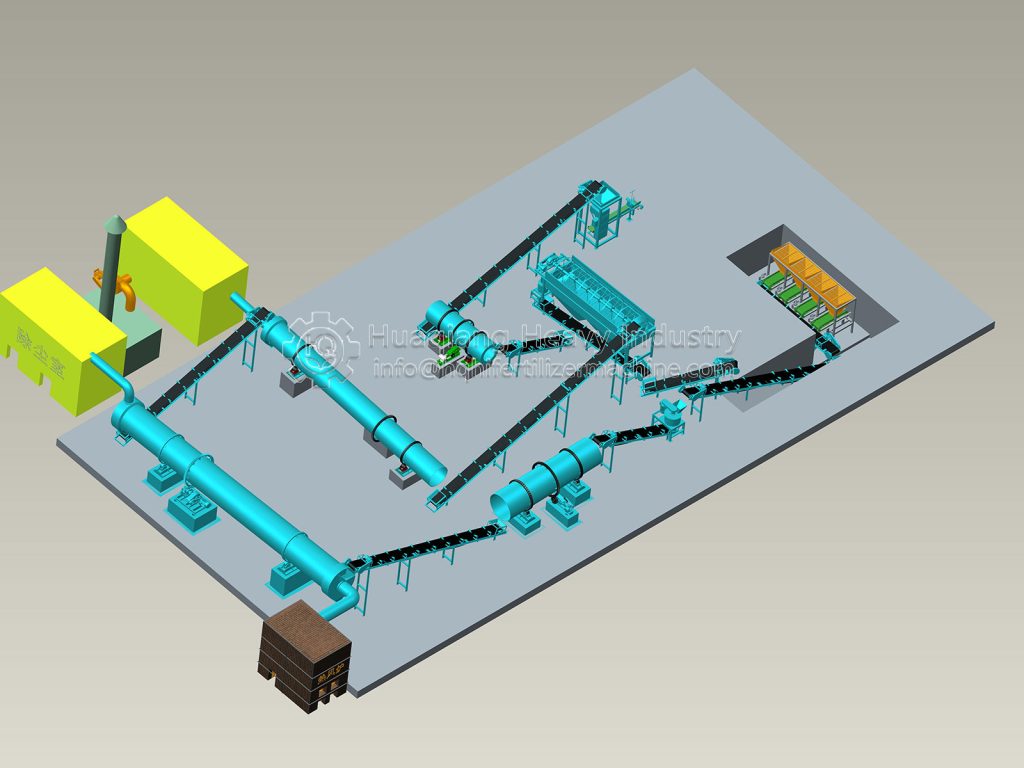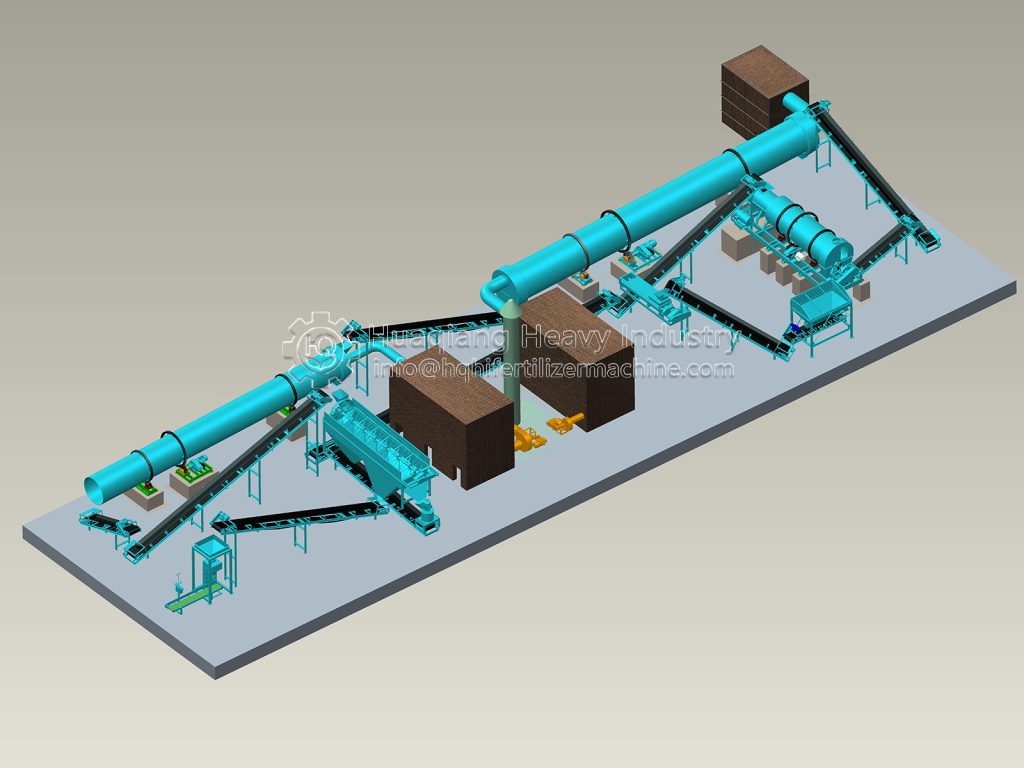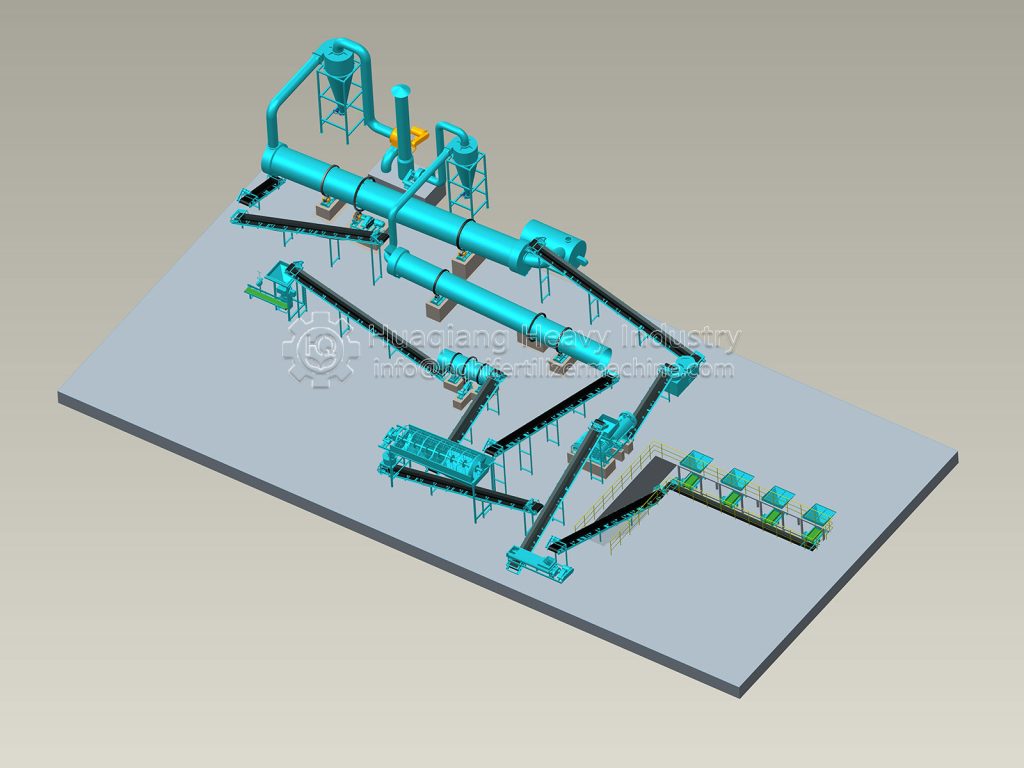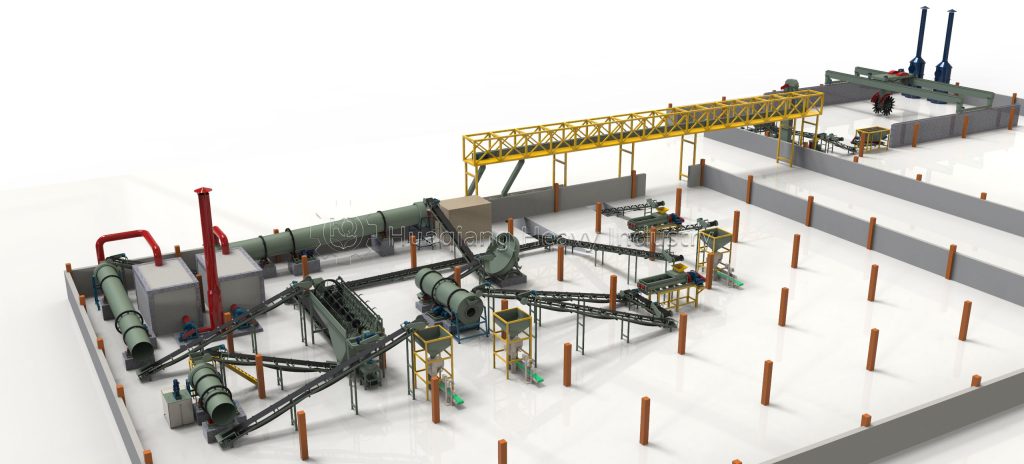Organic fertilizer production is an ecological cycle of “turning waste into treasure.” Organic fertilizer production lines transform agricultural waste into nutrients that nourish the soil, and the entire process is guided by a green and environmentally friendly philosophy.
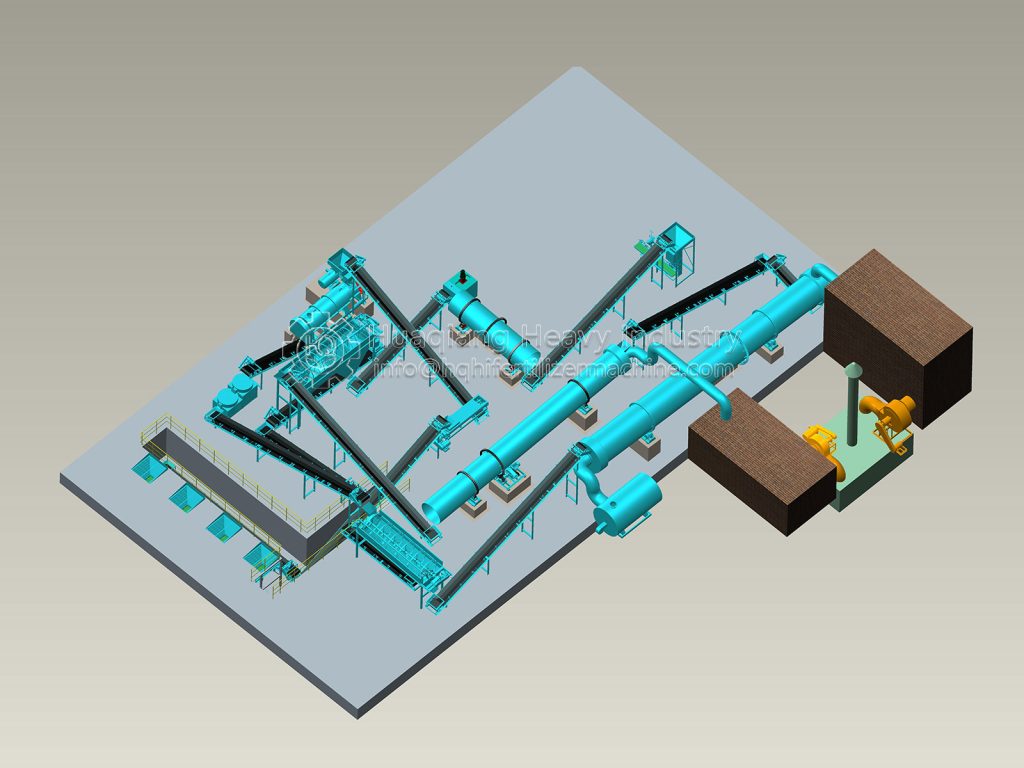
The first step in production is the collection and mixing of raw materials. Common raw materials include plant residues such as crop straw, rice husks, and peanut shells, as well as livestock manure such as chicken, cow, and sheep manure. These raw materials must be strategically combined to achieve a carbon-to-nitrogen ratio of approximately 30:1, for example, a straw-to-manure ratio of approximately 3:1. A small amount of wood ash is added to adjust the pH and create a suitable environment for microbial activity.
Next, the fermentation and composting stage begins, the core of organic fertilizer production. The mixed raw materials are transferred to a fermentation silo where they are regularly stirred by a turning device to maintain a temperature of 55-65°C. This temperature not only kills pathogens, insect eggs, and weed seeds, but also stimulates microbial activity. After 20-30 days of composting, the raw materials will gradually darken and soften, emitting a faint earthy odor, indicating that the organic matter has been fully decomposed.
The composted material needs to be refined. First, it is crushed into a fine powder by a crusher to remove impurities and large particles. Then it enters the granulation stage, where a granulator is used to make the powder into granules with a diameter of 2-5 mm for easy storage and application. Finally, it is screened by a screening device to separate the qualified granules, and the unqualified crushed materials are returned for reprocessing.
The finished product also undergoes quality inspection, testing for organic matter content, pH, and heavy metal content to ensure compliance with national standards. Qualified organic fertilizer granules are uniform, have a moderate moisture content (approximately 20%), and slowly release trace elements such as nitrogen, phosphorus, potassium, and calcium and magnesium.
The entire production process utilizes agricultural waste as a resource, addressing environmental pollution while replenishing natural nutrients to the soil. This “take from the field, return to the field” model is the key to the sustainable development of organic agriculture.

